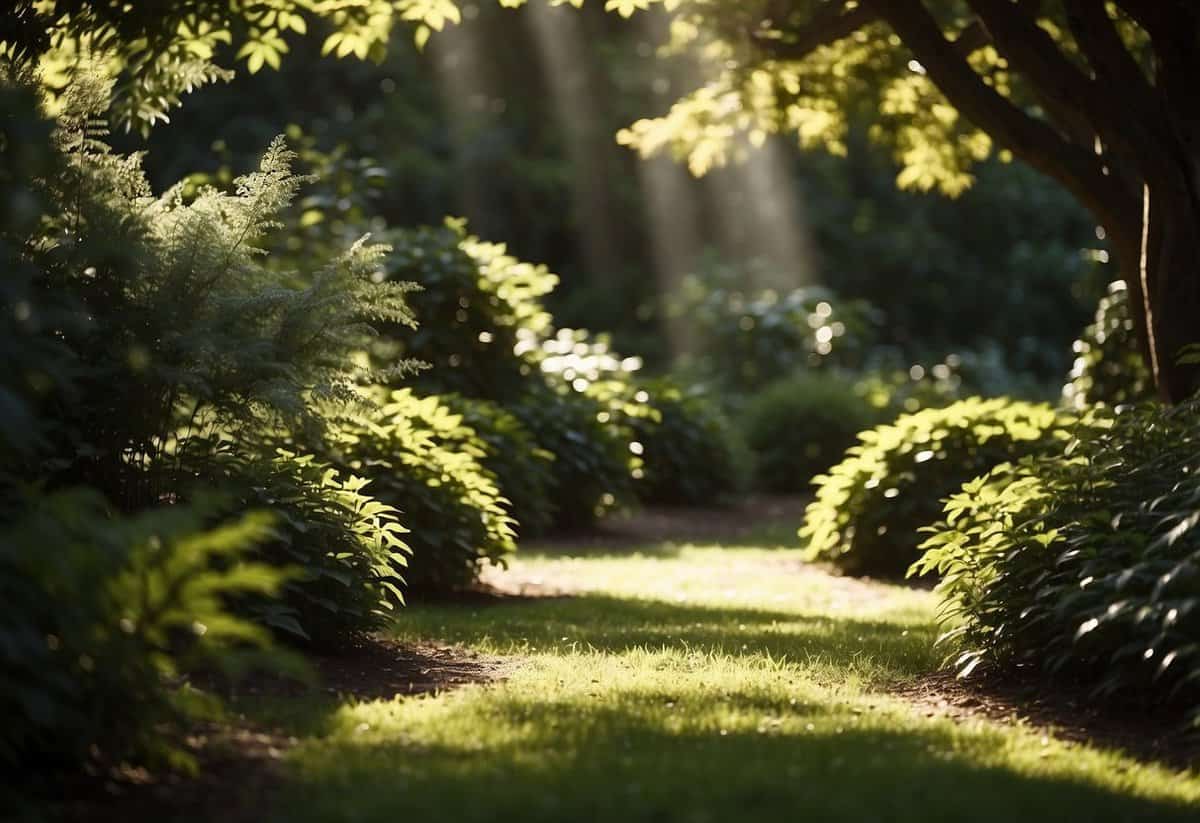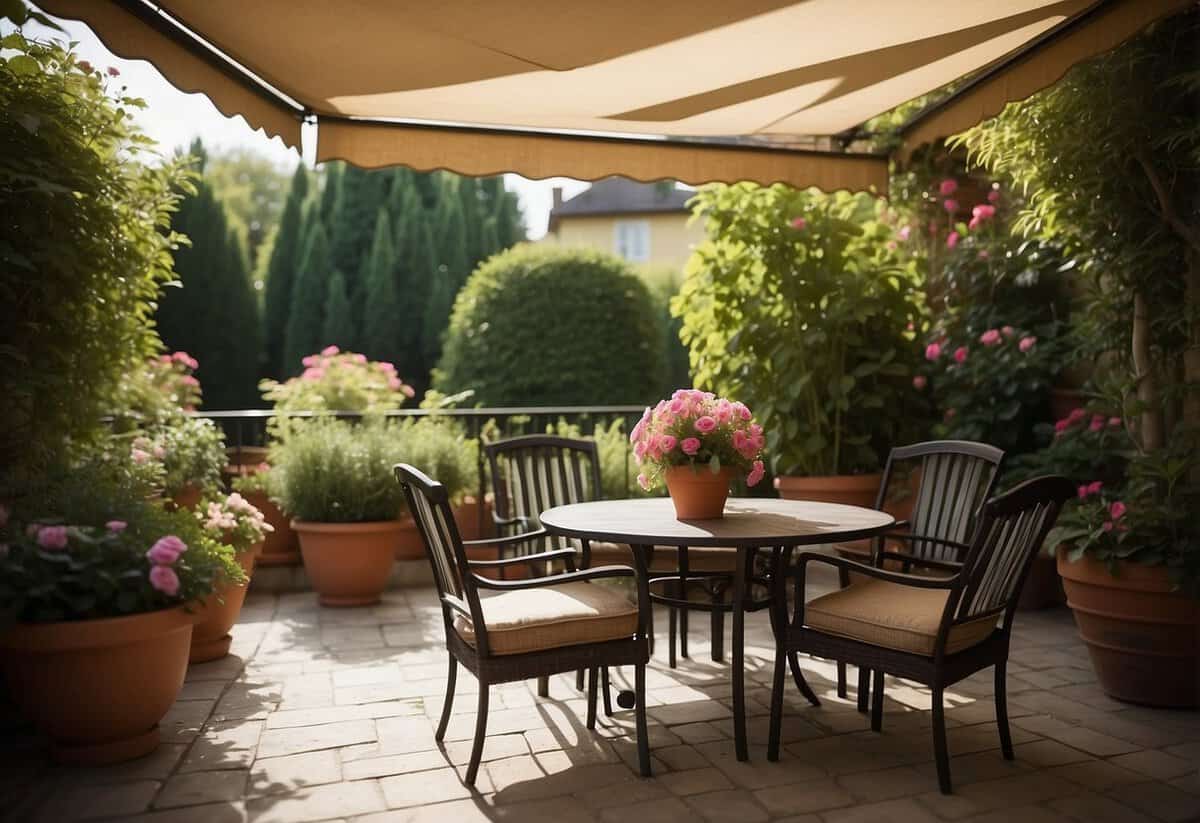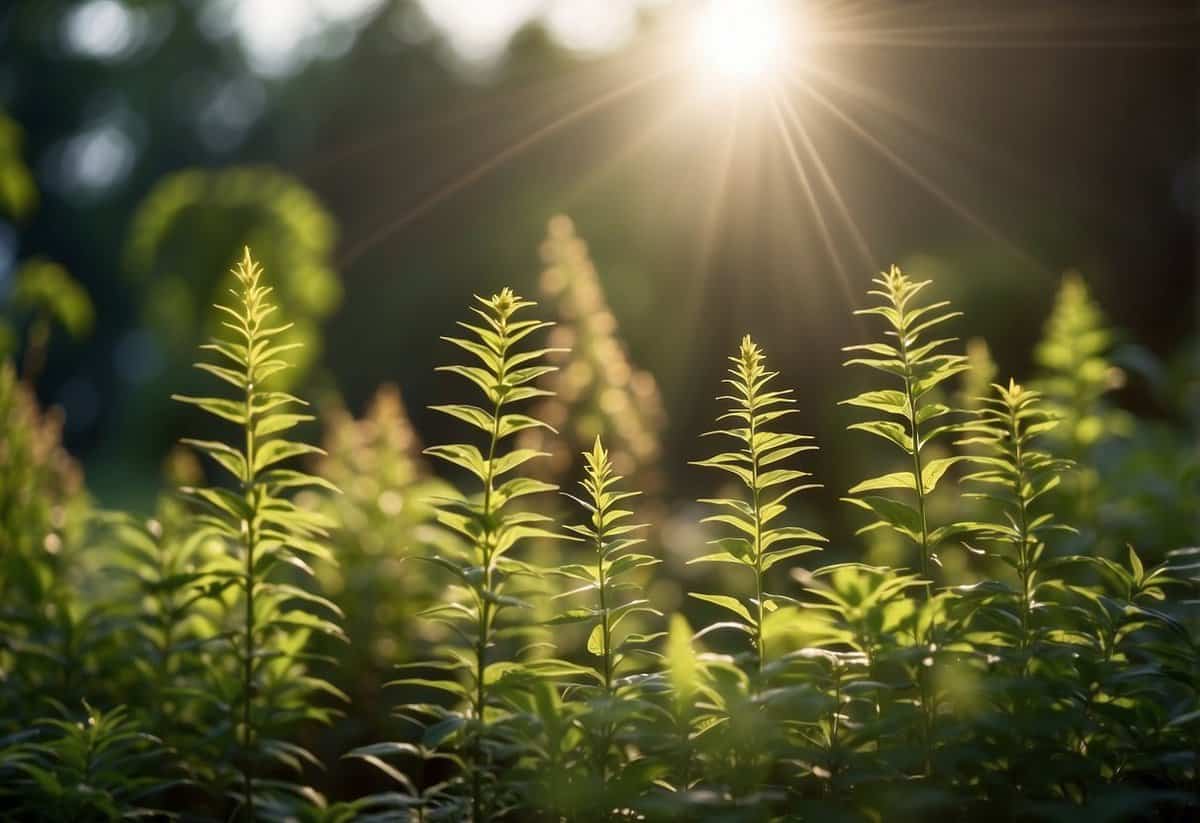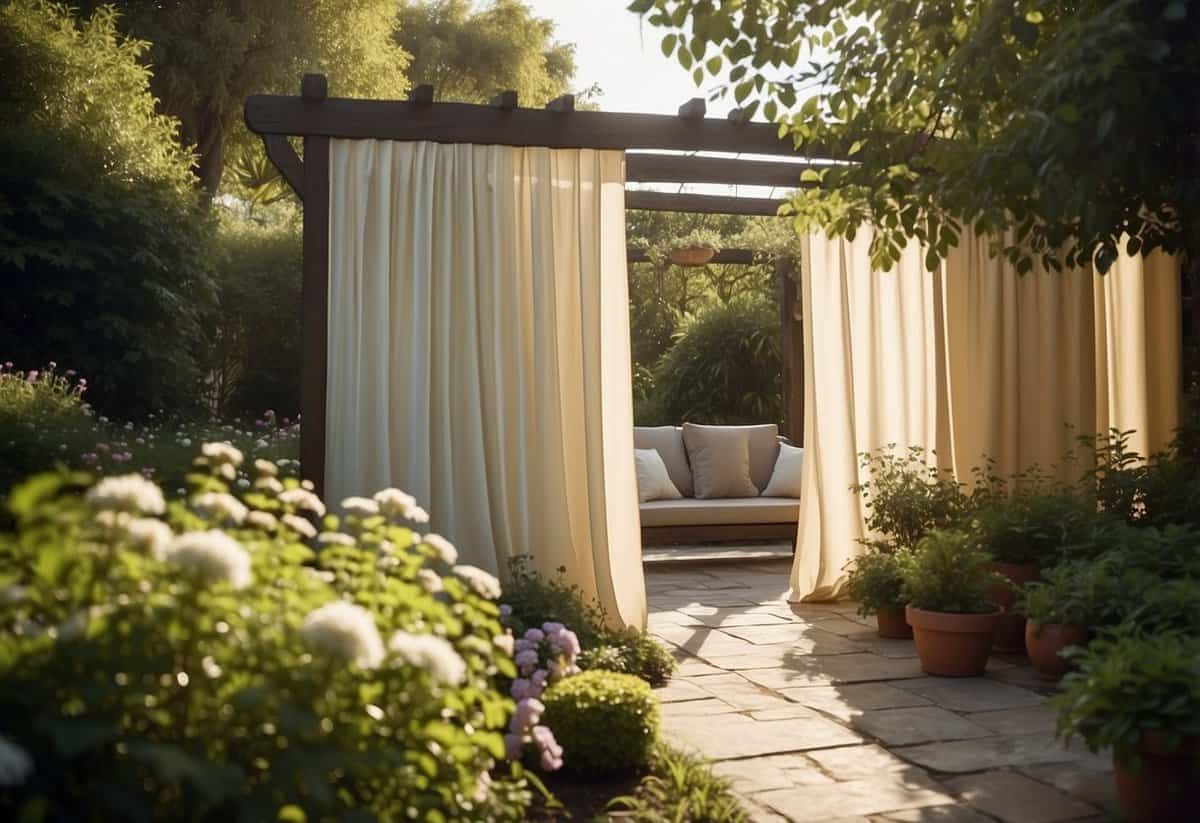Garden Shade Tips: Creating Cool and Relaxing Outdoor Spaces
Creating a beautiful shade garden can seem challenging, but with the right tips, you can transform even the shadiest spots into a lush, green oasis. Whether you have a few trees casting shade over parts of your yard or an entire garden area that’s shielded from the sun, there are plenty of options to explore.

What plants thrive in the shade and how can you design a garden that looks vibrant without much sunlight? This guide will help you with practical advice and creative ideas to make your shade garden flourish. Dive in to discover how you can turn those shaded areas into your garden’s standout feature.
1) Install a Shade Sail

Installing a shade sail in your garden can provide much-needed relief from the sun. Start by marking where you want the posts. Dig 3-foot deep holes for each post.
Make sure each post is straight by using a level. Fill the holes with quick-setting concrete and let it dry. Secure the shade sail using sturdy fixtures to prevent sagging.
For detailed steps, check out this guide on installing a shade sail.
2) Plant Fast-Growing Trees

Fast-growing trees are a great way to add shade to your garden quickly. Trees like the American sycamore can grow up to 2 feet per year and reach about 80 feet tall.
Silver maples are another excellent choice. They grow more than 2 feet per year and can reach 80 feet tall and 50 feet wide, providing ample shade for your garden.
If you want something smaller, try a weeping willow. These trees grow 2 to 3 feet per year and can reach 30 to 40 feet tall.
Planting these trees will help create a cooler, more enjoyable outdoor space.
3) Use Pergolas with Climbing Plants

Pergolas offer beauty and functionality. By adding climbing plants, you can create a cool, shaded area in your garden.
Clematis is a great choice for quick growth and vibrant flowers. It can cover your pergola fast, providing shade and color.
Morning glory vine is another excellent option, especially in sunny spots. It’s easy to grow and can quickly fill in spaces on your pergola.
Honeysuckle can also thrive in partial shade and brings a lovely fragrance to your space.
For more ideas, you can explore a wide range of climbing plants.
4) Set Up a Retractable Awning

A retractable awning is a great way to add shade to your garden. These awnings can open or close in less than a minute. You can operate them using a remote, wall switch, or even your smartphone.
When installing, make sure you have enough wall or roof space. You’ll need about 6 to 12 inches. Windows facing east or west need more coverage compared to south-facing windows.
Keeping your awning clean is important. Spray it with a hose and use mildew remover to avoid mold. Make sure it dries completely before retracting. This simple maintenance will keep your awning in good shape.
5) Build a Wooden Garden Gazebo

A wooden garden gazebo can be a perfect retreat in your backyard. Gazebos offer shade and a space for relaxation.
Start with a sturdy base. Mark the location of your posts and dig holes with a post-hole digger. Use quick-setting concrete to anchor the posts.
Next, build the framework, which includes posts, beams, and joists. This will form the skeleton of your gazebo. You can find detailed plans for designs like the Grillzebo and picnic table gazebo for added ideas.
With some patience and effort, you’ll enjoy a beautiful garden retreat.
6) Place Tall Plants Nearby

Tall plants can make your shade garden feel cozy and protected. They act as natural backdrops and help define the space.
Consider planting bugbane, which grows up to 5 feet tall and blooms in late summer.
Adding tall flowering perennials will create a stunning, layered effect.
7) Employ Shade-Loving Container Plants

Using shade-loving plants in containers can brighten up gloomy garden spots. For example, coral bells offer colorful foliage and thrive in shady areas.
Consider planting begonias, which can handle partial to full shade and add vibrant color to your space.
Mix in some sweet potato vine, known for its striking foliage, to create interesting visual contrasts. These plants are easy to care for and will transform your shaded garden spots.
8) Create a Living Fence with Hedges

A living fence with hedges adds beauty and privacy to your garden. Using plants like Thuja trees or shrubs, you can create a dense barrier.
These hedges can also act as windbreaks and provide habitats for birds. Pick plants that thrive in your climate. This makes maintenance easier.
For added interest, choose hedges that bloom or have colorful foliage. This will keep your garden lively year-round.
9) Drape Outdoor Curtains

Draping outdoor curtains can add both style and function to your garden. They provide shade and a sense of privacy.
To hang outdoor curtains, you can use a traditional curtain rod or a wire rope mounting kit. These kits, which you can find on sites like Amazon, include rust-proof wires perfect for outdoor use.
For a coastal-inspired look, you can use white curtains with rope ties on your patio. This setup not only looks great but also helps keep the curtains in place.
10) Construct a Lattice Fence

Constructing a lattice fence is a great way to add shade to your garden. You can create a boundary that provides both shade and privacy.
Vinyl lattice panels are a popular choice. You can easily install them around your patio. This not only cools the area but also offers some privacy.
For a DIY option, building a lattice screen is simple and effective. Measure and cut your wood, then assemble using nails or screws.
Understanding Your Garden’s Shade Needs

Knowing the shade needs of your garden is crucial for healthy plant growth. Different types of shade can affect how well your plants thrive.
Identifying Shade Types
Shade can vary significantly. Dappled shade happens when sunlight filters through tree branches, creating a mix of light and shadow. This type of shade is usually perfect for many plants as it provides gentle light.
Partial shade areas receive 3-6 hours of sunlight daily, often during the morning or early afternoon. This is good for plants that need less direct sunlight. Full shade areas get less than 3 hours of direct sunlight each day, which means you’ll need to choose shade-loving plants. Look for signs to identify these shade types in your garden.
Analyze where your garden gets sunlight and shade throughout the day. Understanding these patterns helps you pick the best spots for different plants. Keep a watch on how the light changes, especially if there are trees or buildings nearby.
Assessing Light Levels
To properly assess light levels, observe your garden at different times of the day. Note the amount of sunlight in various spots. Create a simple map or sketch of your garden. Mark the shaded areas at 9 a.m., 12 p.m., 3 p.m., and 6 p.m.
Combine these observations to get a clear picture of the light conditions. Pay attention to plants already thriving in shade to learn what might work best. Also consider the types of plants you want to grow and their sunlight needs. Plants like ferns and hostas do well in low light, while others need more.
Using these methods, you can ensure that your garden gets the right amount of light for optimal growth.
Effective Shade Solutions

Creating effective shade in your garden involves using the right materials and plants to provide cover and support growth. This ensures your plants thrive even in reduced sunlight.
Using Shade Cloths and Sails
Shade cloths and sails help block direct sunlight and reduce heat. They come in different materials, like canvas or white cloth, and varying densities to control the level of shade. When you set them up, use tall stakes to prop them securely.
You can easily cover multiple flower beds with a large spread of canvas and still allow plant growth underneath. The tall setup gives you free movement around your garden, making maintenance easier.
Look for UV-resistant materials to ensure durability. The versatility of shade cloths lets you create temporary or permanent solutions. They are great for delicate plants that need protection from intense sun.
Planting Shade Trees and Shrubs
Planting trees and shrubs offers natural and long-lasting shade. Choose trees that fit your local climate and soil conditions. Evergreen trees, like sprinter boxwood, provide year-round cover and structure to your garden.
Pick shrubs with varying foliage textures and colors to create visual interest. For instance, combine the fine foliage of ferns with broad-leaved plants like hosta. They not only add shade but also enhance your garden’s aesthetics.
Consider native plants as they are well-adapted to your environment and require less maintenance. Planting a mix of both trees and shrubs ensures that your garden has a combination of height and coverage. This helps in creating shaded areas with diverse plant life.







